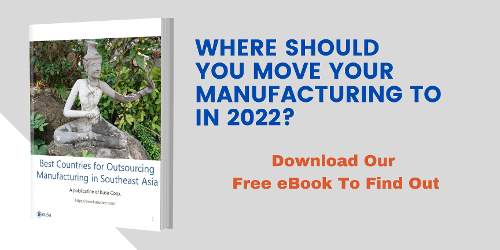When the US-China trade war broke out in 2018, many were surprised. Prior to the outbreak, the two...
Why You Should Care About BRICS
Brazil, Russia, India, China, and South Africa, the BRICS countries, are undoubtedly global economic juggernauts, being among the most dynamic and fastest growing economies in the entire world.
%20(7).png?width=600&name=Untitled%20(600%20%C3%97%20350%20px)%20(7).png)
These countries were already, at the very least, regional powers, if not more, alone. Together, they form a formidable geopolitical and geoeconomic bloc.
In this week’s article, we will be delving into BRICS. More specifically, we will be looking at their history, how they compare with the G7, and their most recent developments.
Background
BRICS states that the concept for BRICS came about in 2006, on the sidelines of the UN General Assembly. Though, according to the Council on Foreign Relations, BRICS only officially became an international bloc in 2008 following the signing of a joint communique at the G8 Summit. South Africa would later join the new bloc in 2011 following invitations from the other countries.
The main reason for the creation of BRICS was to give emerging powers and developing countries a greater voice on the international stage, especially when it comes to matters of global governance. BRICS has strongly advocated for the reform of international financial institutions from its earliest days, post-2009 Global Financial Crisis.
As a result, beyond hosting annual summits, in 2014, BRICS also established the New Development Bank and the Contingent Reserve Arrangement as alternative international financial institutions. These financial institutions are planned to hold USD 200 billion in assets in the future, writes BRICS. Various economic partnership agreements have also been signed as part of the BRICS framework.
Comparing BRICS to the G7
Where BRICS is composed of the five fastest growing economies, the Group of Seven (G7) is composed of the seven largest, most advanced economies: Canada, France, Germany, Italy, Japan, the United Kingdom, and the United States, with the EU also a non-numerated member. It held its first meeting in 1975 and was initially an ad-hoc forum before becoming a more permanent establishment.
According to the BBC, the G7 countries account for 40% of the global GDP and approximately 10% of the entire global population. It also recently launched its answer to China’s Belt and Road Initiative: The Partnership for Global Infrastructure and Investment. The Partnership is also aimed at funding infrastructure projects in low- and middle-income countries, writes the White House.
Nonetheless, it seems that going forward BRICS will eventually eclipse the G7. The Australian Strategic Policy Institute writes, “The original 2001 Goldman Sachs paper highlighted the size and growth prospects for Brazil, Russia, India and China… and argued for their inclusion into global governance.”
“A follow-up paper in 2003 predicted that by 2040, the four original BRIC nations would have a combined economic weight greater than the six major nations of the G7 (excluding Canada). By the early 2000s, the G7 appeared anachronistic as a forum for shaping global economic policy given the growing importance of the developing nations.”
14th BRICS Summit
BRICS recently held its 14th Annual BRICS Summit virtually (the last two Summits were also held virtually). The key highlight of the Summit revolved around President Xi Jinping of China’s statement as chair. President Xi made it a point to state BRICS’ desire to expand and incorporate more countries into its framework, states Xinhua.
Days prior to the Summit, Reuters reported both Iran and Argentina will attend the summit and have officially applied to be members. While this may be the first time countries have officially applied for membership after South Africa joined, it is not the first time other countries have expressed their interest in membership.
According to VOA News, officials from Egypt, Indonesia, Kazakhstan, Nigeria, the United Arab Emirates, Saudi Arabia, Senegal, and Thailand have previously attended a BRICS Foreign Ministers Meeting. These countries are collectively referred to as BRICS Plus countries and could be interested in membership.
Expansion could be a massive change as “Like it or not, the BRICS as a global governance architecture representing the Global South is here to stay with an expanded policy agenda. The BRICS may even try to entrench their unique role by developing an alternative global financial system…” writes the East Asia Forum.
Conclusion
BRICS is a formidable grouping of developing countries. It has the potential to be a key driver of global economic growth, especially if it were to include more and more developing countries and regional powers.
-1.jpg?width=146&height=50&name=Kusu%20(1)-1.jpg)

-1.png?height=200&name=Untitled%20design%20(25)-1.png)

